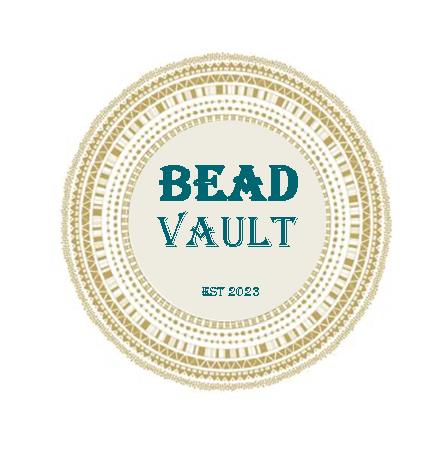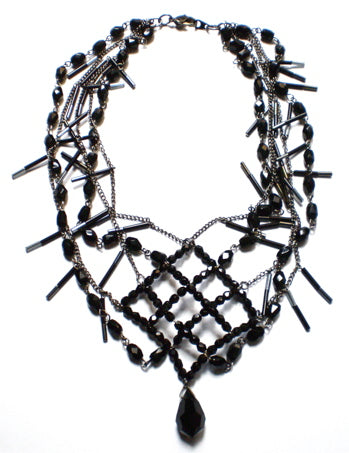Bugle beads are narrow cylindrical tubes of cut glass. Proportionally, they are always longer than they are thick ensuring a tubular shape.

Buy from our large range which are available in sizes ranging from 1.5mm to 30mm and in 3 different surface styles:
- Smooth
- Twisted
- Cut
Twisted Bugle beads are made by twisting the glass to form a spiral along the length of the bead.
The sizes are numerated. The higher the number the longer the length of the bead.
- 5’ 1.6mm
We also stock a limited range in longer lengths:
15mm, 20mm, 25mm and 30mm.
Bugle beads are available in an array of colours, coatings and finishes from silver lined, matt, pearl and iris all adding to the creative beading experience.
We stock over 80 different colours, sizes and finishes in our Czech glass bugle range from 4mm – 30mm. Buy in bulk 500-gram bags or 20-gram retail packets.
Since 2002 we have been selling Czech glass seed beads which are available in bulk 500-gram bags or buy in small retail packets of 20 grams from our extraordinary online range.
Formerly buying from the Ornela factory which distributed the beads by the state-run distributor of Jablonex, the factory was bought by the crystal company Preciosa, an established manufacturer of glass products for centuries in the mountains north of Prague. Today we no longer must surrender our passports as we checked in at the factory. Yes, it is true! A hangover from the communist days but still practiced up until 2007.
How to Use Bugle Beads?
- They are used to great effect adding texture and detail in beaded embroidery, necklace collars and bracelets, off loom bead weaving, or on beaded fringes for lampshades, tassels and clothing.
- They can also be threaded into jewellery, glued or sewn to fabric to create unique clothing, costumes, millinery.
- Triple strand loop drop earrings are interspersed with bugles, seed beads and a few crystals make a gorgeous tassel long necklace. Allow the bugles to give you length and select a beautiful focal bead to be the hero!
- Finish off a multi strand with bugles rather than having multiple strands crimped. Bugles give a more professional finish.

The History of Bugle Beads
Bead netting can be traced back to ancient Egypt where mummy shrouds and clothing were created in netting with faience (quartz ceramic) bugle-shaped beads.
Did you know?
In 1492, when Christopher Columbus set out from Spain on his epic sea voyage, he carried quantities of Venetian glass beads. It was the early 1400s when seed beads and bugle beads were first made in Venice and so quite possibly bugle beads were amongst the beads traded.
According to the ship’s journal, when the crews sloshed ashore on San Salvador island in the Caribbean, the meeting between Europeans and native Americans began as Admiral Columbus “gave them hawk’s-bells, glass beads, and other small things,”
Later In 1609, when Henry Hudson sailed up the eastern shore of what is now New Jersey, he encountered native Indians and invited them to visit his ship. The vessel’s journal records that the Lenape “came aboard us and seemed very glad of our coming and brought green tobacco leaves and gave us of it for knives and beads.”
In 1685, when William Penn signed the treaty in which the Lenape gave up rights to the land that became Philadelphia, the goods used as currency in the deal included “three papers” (envelopes) of glass beads.
Glass was a substance previously unknown to North American native tribes, but their culture placed high value on beaded objects for decoration, religious ceremony and commerce. The Lenape of the Delaware Valley had traditionally made bead-like materials from bone, horn, stone, fruit pits and seashells. None of these materials could compare to the sensual, jewel-like qualities of glass beads struck by sunlight.
A couple of hundred years later and Rococo, mid Victorian and Edwardian fashions were all elegance. Ornately beaded purses and beaded shawls were all the rage and each one works of art. They originated in Czechoslovakia with France and Italy running a close second in production. Bags were made of brocade and other stunning fabrics with beads crocheted or knitted right into the fabric as it was formed, each bead being sewed into the bag individually and thus adding thousands and thousands of tiny stitches to the original creation. The range of beads was stunning, from glass of every conceivable colour to steel to seed pearls to rainbow-colored abalone shells to turquoise crystals to ivory to amber to coral and even scarlet beans. Each radiated special effects and unique designs.
In the 1920s saw the rise of the flamboyant fringed cocktail dress worn by flappers including bugle bead fringing, feathers, and beaded embroidery.
Parisian fashion designers, influenced by Cubism in the early 1920s, began to make dresses such as these, with clean lines, angular forms, and loose fits. The styles began to permeate fashions of the everyday woman across America with the popularity of mail order catalogues, such as the Sears catalogue, that sold cheaper versions of designer styles.
The delicate, knee-length “flapper” style dress was re produced and mass produced by being machine-made with hand sewn pearl and glass bugle beads.
Today, with the recent adaption F. Scott Fitzgerald’s classic American novel, The Great Gatsby, to film by Australian Director Baz Luhrman showcased dazzling beaded and sequined shift dresses, the most iconic of 1920s garments.
Oblong
These are commonly known as Preciosa oblongs, the Czech factory they were developed in. The pillow shaped beads come in two sizes 5 x 3.5mm and 10 x 3.5mm.


